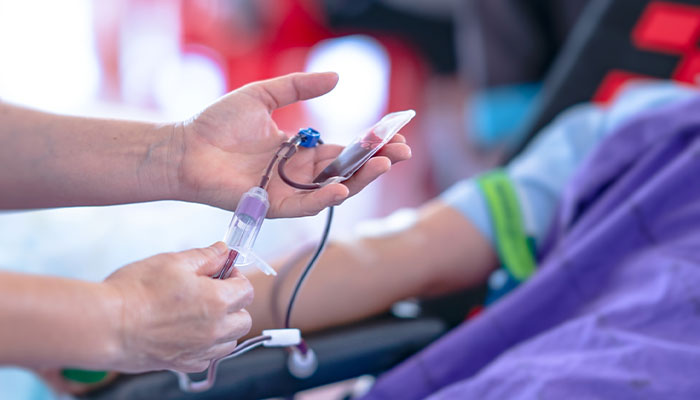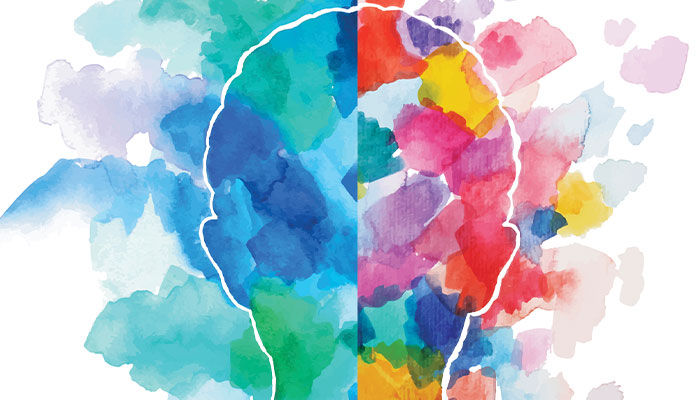New research has revealed how hidden feelings of disgust at the idea of blood donation may be key to why more people don’t give blood, despite the best intentions.

Holding back: Everyone thinks blood donation is a good idea, but only one in 30 Australians donate each year, and researchers sought to explore the role of disgust in stopping more people from turning out.
“If you go out in the street and ask someone whether it is a good idea to give blood, and whether they would want to give blood, everyone is going to say ‘Yeah, for sure’ but if you ask them if they want to give blood right now, they might say, ‘Ah, I don’t know’,” says Dr Philippe Gilchrist, Senior Lecturer in Psychology at Macquarie University
In the study led by Gilchrist, researchers sought to explore the role of disgust in attitudes towards blood donation, given the prevalence of disgust-related paraphernalia involved in the procedure such as needles, tubes and blood bags.
They hypothesised that for people who have a higher private body consciousness – that is, they are generally sensitive to their bodily sensations, such as heart flutters – disgust would lead to more negative hidden attitudes towards donation than other emotions. Previous research suggested that private body consciousness may be related to the extent to which people pay attention to their emotions, including when making decisions.
If you want people to drop into donation centres, don’t underestimate the impact of simple things like images of blood bags and needles on potential donors.
The study supported their theory, and led the researchers to conclude that managing or obscuring disgust-related stimuli in donation centres and recruitment campaigns might improve attitudes towards blood donation, especially spontaneous drop-in donations or 'blood drives' when induced emotions and attitudes may have the most profound effect.
Implicit attitudes, as significantly affected by disgust in this study, may be particularly influential to these types of spontaneous behaviours, Gilchrist says.
“The advice would be, if you want people to drop into donation centres, don’t underestimate the impact of simple things like images of blood bags and needles on potential donors,” Gilchrist says.
“People might not say that needles and blood bothers them, but it seems to disgust people just enough to significantly alter their implicit attitude to donations, and it might bother them enough to make them feel that they don’t want to donate – even though they may be reticent to say and unlikely aware of its influence.“
Filthy toilet v axe-wielding man
The study involved 123 participants filling out questionnaires that assessed their private body consciousness, disgust sensitivity, altruism and social desirability (that is, how much they want people to think well of them).

Red alert: The researchers found that induced emotions and attitudes may have the most profound effect when it comes to spontaneous drop-in donations or 'blood drives'.
Next, they watched one of four videos previously established to induce emotions, including fear (a man chasing a woman and child wielding an axe), disgust (footage of a filthy toilet), moral elevation (a man whose life was positively changed by a mentor) and a neutral condition (a nature documentary).
Participants then completed an implicit association test that measured their degree of association between the concept of blood donation and the feelings it induced. This measure was used because people are not always willing or able to accurately report attitudes.
They also answered questions about their explicit attitudes towards blood donation.
Studies have shown that up to 60 per cent of new donors do not return within two years, and retention is even lower for plasma donors.
“People didn’t differ to the extent that they said that they did or didn’t want to donate, but when we measured their attitudes implicitly then the differences come up,” Gilchrist says.
As predicted, “induced disgust led to more negative implicit attitudes towards blood donation among participants sensitive to bodily sensations,” the researchers said, pointing out that induced fear did not produce a comparable effect.
“There was no effect of emotion on explicit attitudes.” That is, people said they supported the idea of blood donation, no matter their level of implicit disgust.
Ongoing efforts to tackle blood shortages
In Australia, one in three Australians will need donated blood or blood products in their lifetime, while only 1 in 30 Australians donate blood each year. Blood shortages are common, with two urgent appeals most recently in March for thousands of donors to come forward.
As the researchers point out, the integral role of blood donation in the medical system requires ongoing efforts to ensure stable supply, including strategies to recruit and retain donors.
- One-third of backyard soil unsafe to grow vegies
- Hero volunteers of the AIDS crisis tell their stories at last
Gilchrist says the study sheds light not only on what might stop people giving blood in the first place, but why many people may only give blood once. Studies have shown that up to 60 per cent of new donors do not return within two years, and retention is even lower for plasma donors.
“Maybe blood centres could ask the question of, to what extent should we continue to have all the blood bags and needles visible, and should we have all the donors arranged in chairs so they are facing each other, and therefore literally face to face with dozens of different disgust stimuli?,” he says.
“It might be the case that planned decisions are one thing, but spontaneous decisions, like the pop-up donation clinics, are a little more impacted by emotions like disgust.”
Dr Philippe Gilchrist is a Senior Lecturer in the Department of Pyschology.



